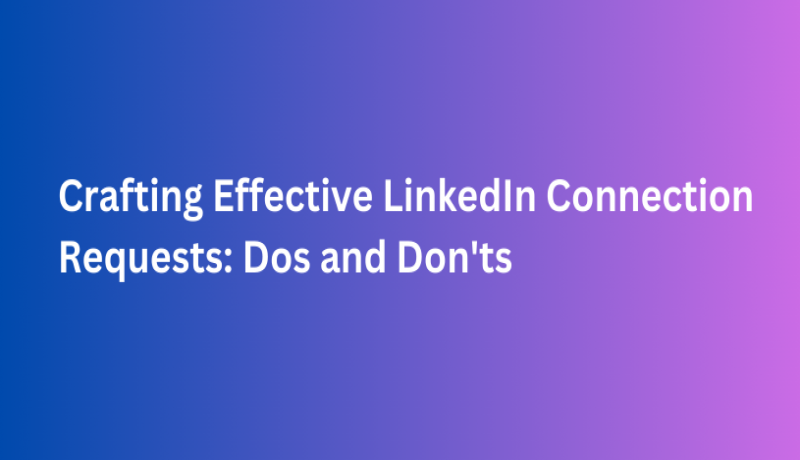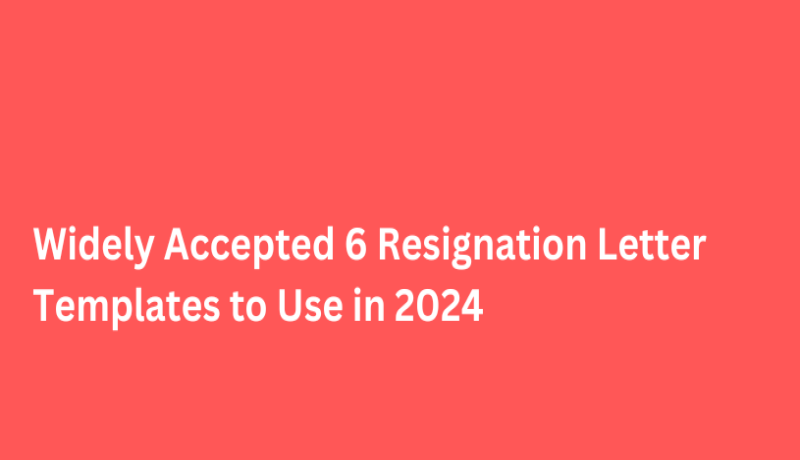Crafting Effective LinkedIn Connection Requests: Dos and Don'ts
In the vast landscape of professional networking, LinkedIn stands out as a crucial platform for connecting with peers, industry leaders, and potential employers.
While sending connection requests might seem like a simple task, the effectiveness of your approach can significantly impact your networking success.
Personalizing your LinkedIn connection requests is key to making a memorable impression and establishing meaningful relationships.
Let's delve into the dos and don'ts of crafting personalized connection requests on LinkedIn.
The Dos:
1. Research Before Reaching Out:
Before sending a connection request, take the time to research the recipient. Understand their professional background, interests, and recent activities. Mentioning a shared interest or acknowledging their recent achievements demonstrates genuine interest and increases the likelihood of your request being accepted.
2. Customize Your Message:
Avoid generic connection requests that provide little context or value. Instead, craft personalized messages tailored to the individual you're reaching out to. Reference mutual connections, common interests, or relevant experiences to establish a connection and initiate a meaningful conversation.
3. Be Professional and Polite:
Maintain a professional tone and demeanor in your connection requests. Use proper language, address the recipient by their name, and express your intentions clearly and courteously. A polite and respectful approach enhances your credibility and leaves a positive impression.
4. Highlight Mutual Benefits:
Clearly communicate the potential benefits of connecting with you. Whether it's sharing industry insights, exchanging expertise, or exploring collaboration opportunities, emphasizing mutual benefits encourages the recipient to accept your request and engage in further interaction.
5. Follow Up Appropriately:
If your connection request is accepted, promptly follow up with a thank-you message expressing your gratitude and reiterating your interest in connecting further. Respect the recipient's time and preferences, and avoid overwhelming them with excessive messages or requests.
The Don'ts:
1. Sending Blank or Generic Requests:
Avoid sending connection requests without any accompanying message or with generic templates. Such requests lack personalization and fail to convey your intentions or reasons for connecting, making them less likely to be accepted.
2. Using Overly Salesy Language:
Refrain from using aggressive or overly promotional language in your connection requests. Instead of focusing solely on self-promotion or selling your products/services, prioritize building genuine relationships based on mutual respect and shared interests.
3. Ignoring Previous Interactions:
If you've previously interacted with the recipient, acknowledge your past conversation or engagement in your connection request. Failing to reference prior interactions may come across as impersonal or insincere.
4. Being Impersonal or Insincere:
Avoid generic compliments or flattery that lack sincerity. Authenticity is key to building trust and credibility in professional relationships. Be genuine in your communication and avoid using clichés or empty phrases.
5. Sending Mass Requests:
Resist the temptation to send mass connection requests to a large number of users indiscriminately. Focus on quality over quantity, and target individuals whose profiles align with your professional interests and objectives.
Personalizing your LinkedIn connection requests is essential for establishing meaningful professional relationships.
By following these dos and don'ts, you can increase the likelihood of your requests being accepted and lay the foundation for productive networking opportunities.
Research your recipients, customize your messages, and prioritize professionalism and authenticity in your interactions. Happy networking!
Your Resume Needs an Upgrade!
Our Executive Resume Writing Service is designed for leaders like you, who are aiming to elevate their careers to new heights. Upgrade with professional experts to industry recognized formats, fonts, text, content and pleasing design.
Whether you're pursuing a new career opportunity, seeking a promotion, or aiming for a more rewarding role, we are here to help you achieve your goals.
Get started - https://executiveresumewriting.c-suitecvsecure.com/
Career Advice
Why is It Important to be Visible in Your Organization?
Traits to Look for in a Professional Mentor
Why Should Senior Executives Use a Professional Resume Writing Service
17 Evidence-Based Strategies to Achieve Work-Life Balance
Things to Do When You Feel your Career is Stuck
How to Ask for a Promotion In 2024 and Actually Get It
Feeling Burned Out at Work? Here's How to Cope
How to Navigate Office Politics
How to Communicate Effectively with Senior Executives in Your Organization
How to Deal with a Bad Boss and Thrive
Navigating the Maze: Strategies for Thriving in a Toxic Work Environment
How to Maximize Time and Efficiency in a Business Conference
How to Write a LinkedIn InMail Seeking Job Opportunities: With Templates
How to Write a Great LinkedIn Summary in 2024
How Long Does It Take a Startup CEO to Build a Successful Business
What is Application Tracking System (ATS) in Recruitment and How to Create an ATS Friendly Resume
How to Write an Executive Resume
17 Key Points to Avoid in an Executive Resume
15 Executive Resume Mistakes You Should Fix Today
Inevitable Components of an Executive Resume
How to Address Job Gaps in Your Resume
How to Explain Layoff in Your Resume
How to Negotiate Salary When You are Offered a Job
Salary Negotiation for C-Suite Executives
7 reasons Why Recruiters Are Ignoring You Even After Interviews
How to Prepare for a Psychometric Assessment
20 Top Phone Interview Tips to Make a Good Impression
Why do Companies Fire and Hire at the Same Time?
What is Organizational Restructuring and How to Deal with an Organizational Restructuring
How to Deal with Job Insecurity
15 questions to Ask Yourself Before an Executive Panel Interview
Why does the Unemployed Find it Difficult to Land a Job








